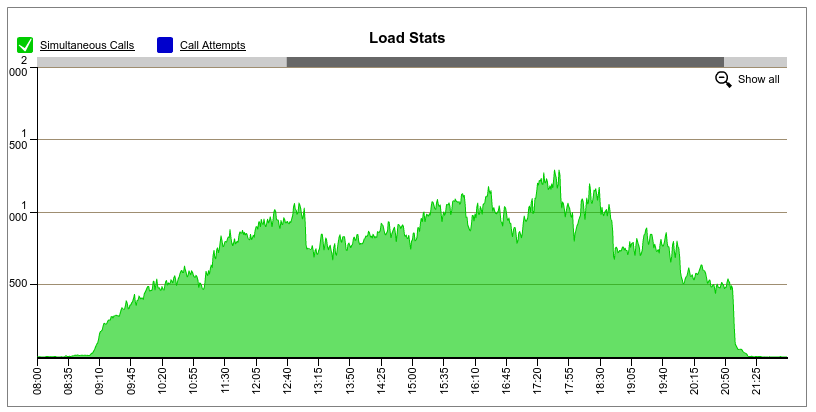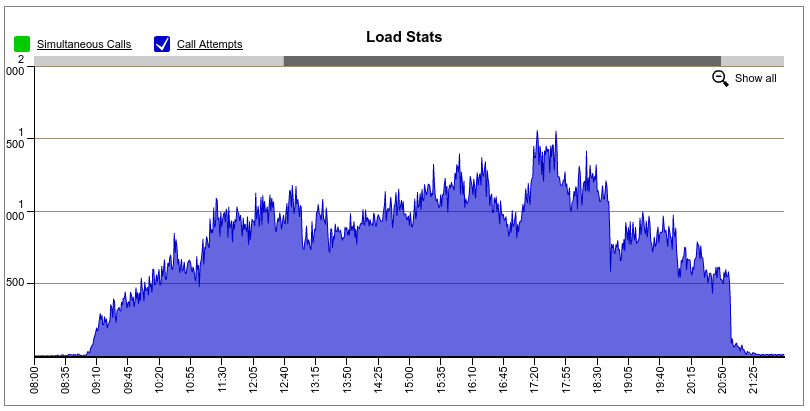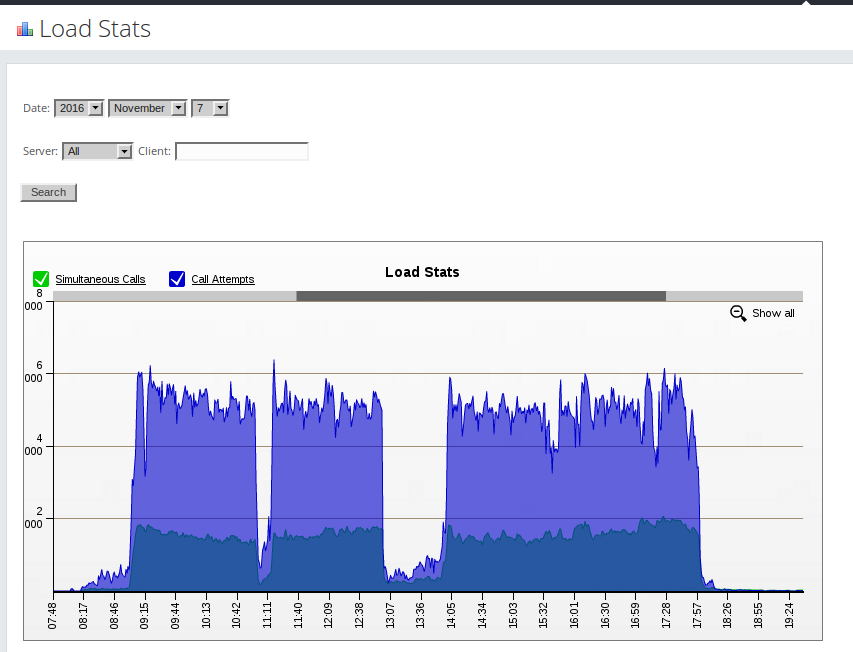Difference between revisions of "Softswitch performance"
| Line 102: | Line 102: | ||
* [[M2_Switch_Stress_Test | Results of M2 stress tests]] | * [[M2_Switch_Stress_Test | Results of M2 stress tests]] | ||
* [http://blog.kolmisoft.com/how-do-you-select-a-softswitch-based-on-concurrent-calls/ How do you select a softswitch based on concurrent calls?] | * [http://blog.kolmisoft.com/how-do-you-select-a-softswitch-based-on-concurrent-calls/ How do you select a softswitch based on concurrent calls?] | ||
* [[Performance Suggestions]] | |||
Revision as of 10:54, 8 December 2016
What is the maximal single server performance?
Max. performance of single server solutions (real examples):
- MOR - 500 concurrent calls*, 25 CPS (see: wholesale transit business #2)
- M2 - 2000 concurrent calls*, 100 CPS (see: wholesale transit business #3)
Once you reach limits of a single server, it is recommended to deploy a multi-server solutions.
What is the maximal multi-server performance?
- MOR - 1200 concurrent calls* (see: wholesale transit business #1)
- M2 - screenshots will be added soon...
We have not implemented bigger systems than above, so it is not possible to show or predict performance results if you add more servers.
Factors that influence softswitch performance
- Hardware specifications (CPU, RAM, HDD type - 5400/7200 rpm, SSD, SAS, Raid, etc.)
- Network (routers/switches)
- Providers (connectivity, quality, PDD)
- CPS (if you accept a lot of short calls at the same time (so called dialer or call center traffic), softswitch performance decreases)
- Structure of call (signalling only or signalling with media)
- Processes, running on the same time (if you generate invoices, statistics or run other processes, softswitch performance decreases)
- Additional functionality usage (if you record calls, use different IVR structures, softswitch performance decreases)
- Codec and protocol used
- Protocol and codec conversion (in case of transcoding performance decreases two times)
- Calls length (if you accept a lot of short calls at the same time (so called dialer or call center traffic), softswitch performance decreases)
- DB and GUI on same server or on the separate (if you separate DB and GUI, you can increase performance)
- SIP balancer present or not (if you use SIP balancer in front of the servers, you can increase performance)
- Business model (Calling Card, Callback and Call Center calls decreases softswitch performance)
- etc
See also: How do you select a softswitch based on concurrent calls?
Real examples
In all of below examples companies are using recommended hardware.
Wholesale transit business #1
Implementation (Kolmisoft Hosted servers are used):
- SIP balancer
- 3 Asterisk (MOR) servers
- DB/GUI server
Results: 1200 concurrent calls, up to 1500 call attempts per minute (25 CPS)
Wholesale transit business #2
Implementation - single server solution (GUI is not used almost at all, server has 24 cores).
Results: up to 500 concurrent calls, up to 1500 call attempts per minute (25 CPS)
Wholesale transit business #3
Server details: CPU: Intel(R) Xeon(R) CPU E5-2630 v4 @ 2.20GHz RAM: 32 GB HDD
Results: up to 2079 concurrent calls, 6000 call attempts per minute (~100 CPS)
Calling Cards and Retail business #1
Implementation:
- 1 Asterisk (MOR) + DB + GUI server
Note: main business - calling cards and retail
Results: up to 100 concurrent calls, up to 800 call attempts per minute (13 CPS)







